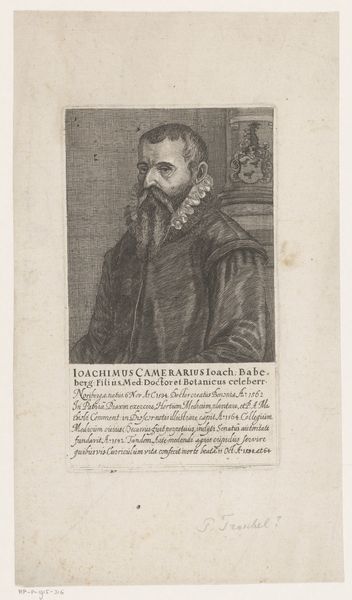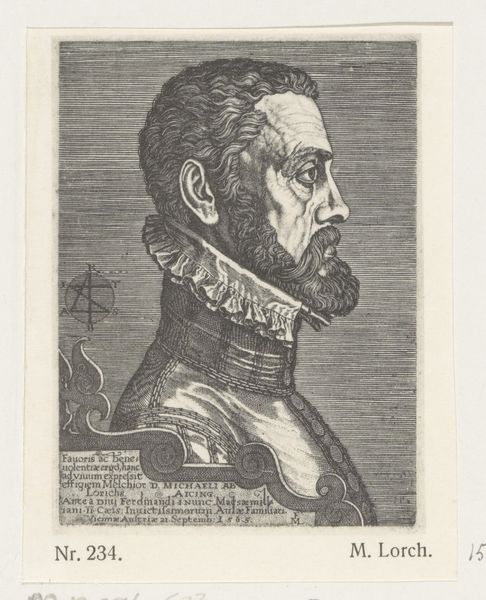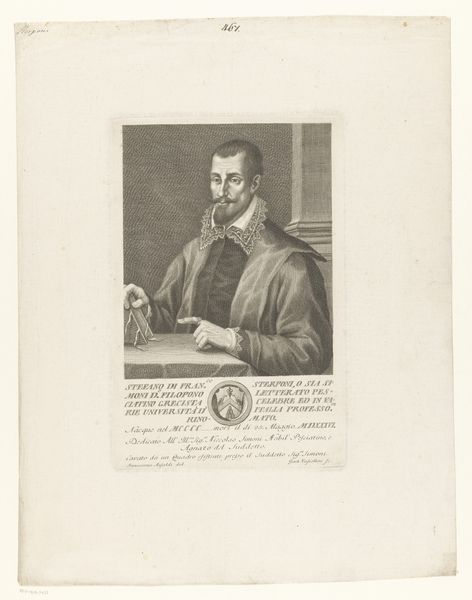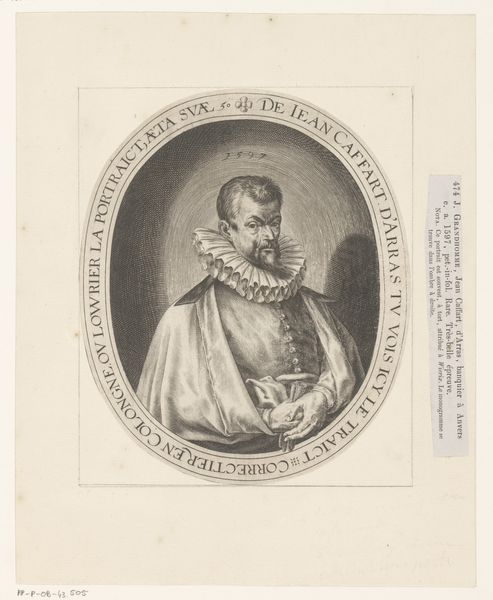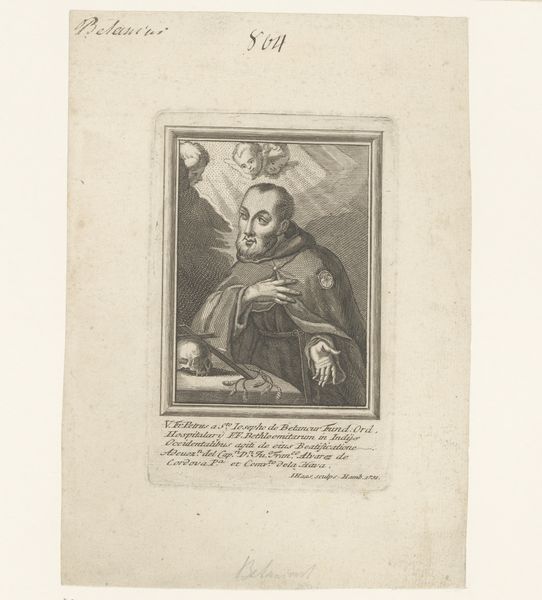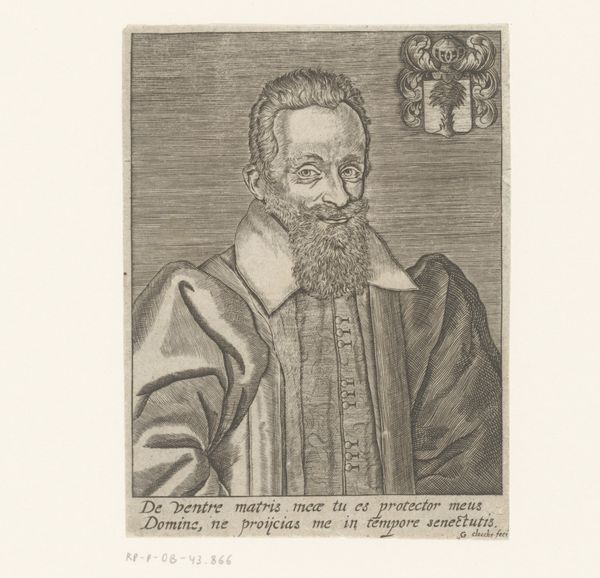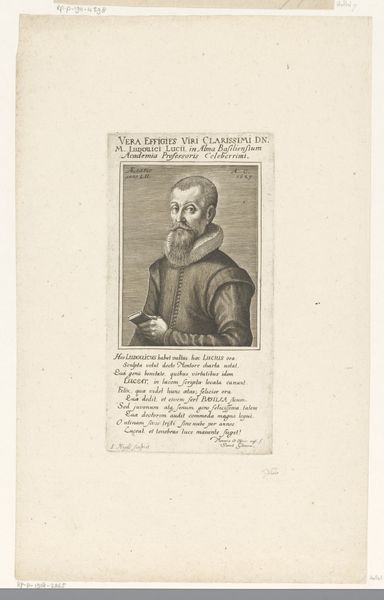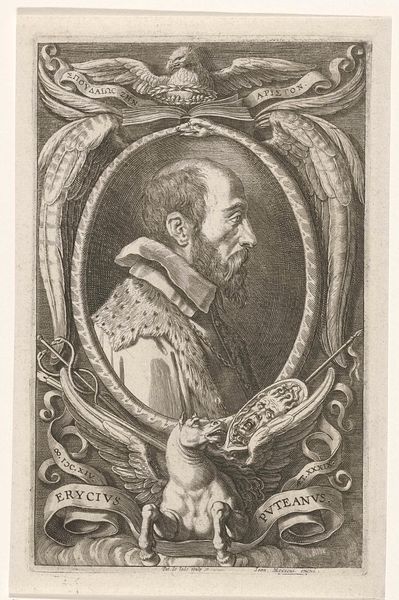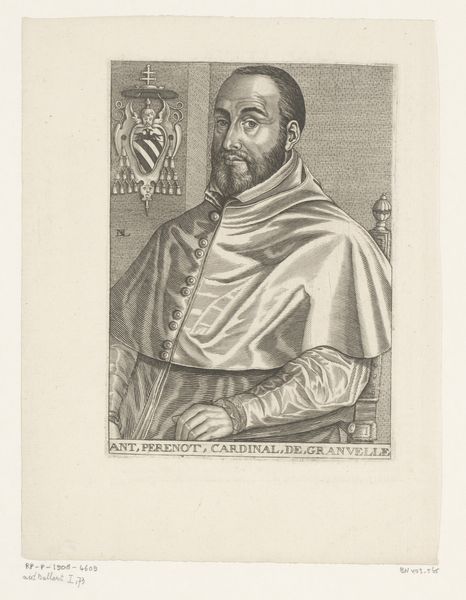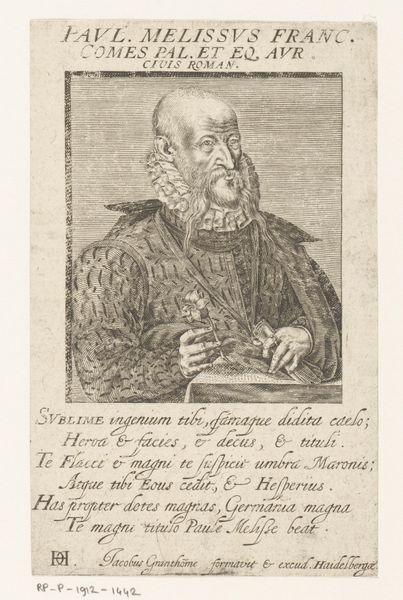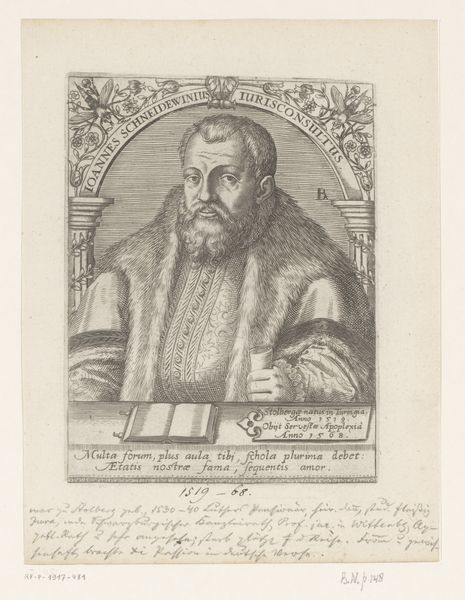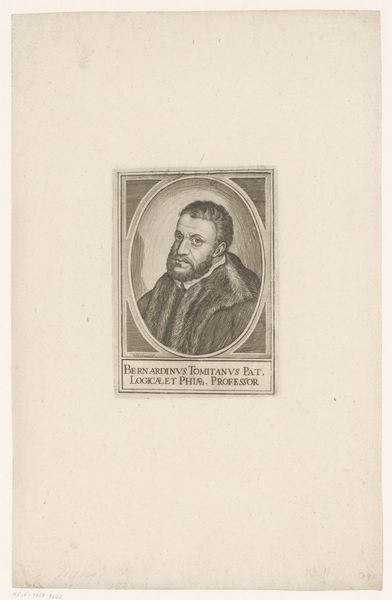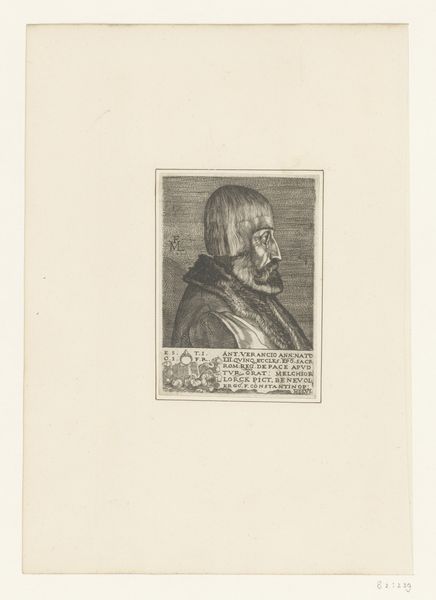
print, engraving
#
portrait
# print
#
11_renaissance
#
northern-renaissance
#
engraving
Dimensions: height 123 mm, width 90 mm
Copyright: Rijks Museum: Open Domain
Curator: This engraving, dating from 1557, presents a profile portrait of Ogier Ghislain de Busbecq. Melchior Lorck, the artist, rendered it in stunning detail. Editor: My immediate reaction is one of intrigue. The sitter’s stern profile and the dense, almost velvety texture of his fur collar create an aura of quiet power. Curator: Indeed. Busbecq was an important figure in the Habsburg court, serving as an ambassador to the Ottoman Empire. Lorck was commissioned to create this image during Busbecq’s time in Constantinople. Consider the print’s function: it served as a powerful tool for propagating Busbecq’s image within the European courts, constructing a persona of a learned and influential diplomat. Editor: The details are incredibly striking, like that delicate star symbol under the lettering, accompanied by a salamander? That links to ideas of resilience, immortality, Busbecq surviving trials of diplomacy through "fire." Curator: Exactly. These details were used for political imagery, to reflect back to Busbecq himself but to inform a much larger public that saw the power and importance that these characters would occupy at court. The placement of these symbols was to reinforce these readings. Editor: It is fascinating how Lorck, a Northern Renaissance artist, uses the precision of engraving to depict not just a likeness, but a symbolic representation. We are also peering into the cultural lens through the dress: what is its relationship to European nobility versus ideas coming from the East? How would this portrait have looked through the cultural view of those encountering the text "Constantinop" within? Curator: It speaks to the way Northern Renaissance art synthesized classical influences with a distinctly Northern European sensibility and to how this print format assisted to promote political personas. Editor: Looking closer has deepened my sense of the portrait's complexity. It’s more than just a likeness; it’s a careful construction of identity, a symbol to an evolving world through a symbolic dance. Curator: Absolutely. This engraving offers insights into how political figures were shaped and circulated through artistic representations in 16th-century Europe.
Comments
No comments
Be the first to comment and join the conversation on the ultimate creative platform.
